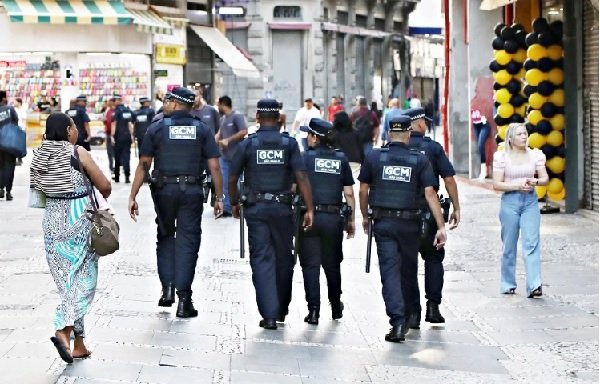Despite the expansion of patrols by the Military Police and the Metropolitan Civil Guard (GCM), criminal activity in downtown São Paulo continues unabated, reflecting a broader trend across the city. This persistence of crime is confirmed by new figures released by the State Department of Public Security (SSP-SP) and by reports from residents and workers who witness the daily actions of cell phone thieves. While the administration of Governor Tarcísio de Freitas (Republicans) celebrates the rise in arrests, the reality on the streets shows that policing alone has not been sufficient to stop the growing wave of thefts.
This Content Is Only For Subscribers
To unlock this content, subscribe to INTERLIRA Reports.
Thefts
Between January and July, police registered 15,226 thefts in the combined jurisdictions of the 1st Precinct (Sé), 2nd Precinct (Bom Retiro), 3rd Precinct (Campos Elíseos), and 77th Precinct (Santa Cecília). This amounts to an average of 72 thefts per day and represents an 11% increase compared to the 13,738 cases reported during the same period in 2024. The rise in thefts in these precincts outpaces the overall increase for the capital, which recorded 144,804 thefts in the first seven months of 2025—a 4% increase over the 139,107 cases reported in the same timeframe the previous year.
Bike Gang
Business owners around Olavo Bilac Square, in the Campos Elíseos district, say they have not experienced the sense of security suggested by the government’s statistics. They face near-daily incidents involving the “bike gangs,” groups of criminals who ride bicycles or motorcycles and wait for distracted pedestrians before snatching their cell phones. These assaults often occur just before or after a police patrol passes through, leaving victims feeling exposed. The pattern has spread across nearly the entire downtown area, and experts believe it is a major factor behind the sharp increase in theft reports. Residents and shopkeepers also point to the displacement of crack users onto several streets in the city center as another element fueling criminal activity.
Robberies
In contrast to thefts, robbery figures show a significant decline in both the central districts and the broader city. From January to July, the four precincts recorded 4,012 robbery reports, about 19 per day, representing a 21% drop compared to 2024, when there were 5,064 cases. All precincts registered decreases: the 1st Precinct (Sé) saw a 12% drop, the 2nd Precinct (Bom Retiro) recorded a 34% reduction, the 3rd Precinct (Campos Elíseos) experienced a 26% decline, and the 77th Precinct (Santa Cecília) reported 20% fewer robberies.
Citywide, robbery cases totaled just over 59,000 in the first seven months of 2025, a 14% decrease compared to the same period the previous year. Authorities note that the downward trend has brought robbery statistics to their lowest level since 2001, although the persistent growth in thefts continues to generate concern.
Analysis:
The recent data from downtown São Paulo demonstrates the limits of traditional policing when faced with evolving criminal dynamics. While the decline in robberies suggests that targeted patrols and stronger deterrence measures are having an effect, the sharp rise in thefts—particularly linked to bike gangs—reveals how offenders adapt their methods to exploit gaps in urban security. This shift creates a paradox: statistics show progress in one area, yet residents and business owners continue to feel unsafe, which undermines public trust in security policies.
From a broader perspective, the displacement of vulnerable populations, such as crack users, into central districts is contributing to an environment where opportunistic crimes thrive. The persistence of these conditions suggests that enforcement alone will not solve the problem. A more effective strategy will require integrating social policies, urban planning, and technological tools—such as surveillance cameras and data-driven policing—into security operations.




